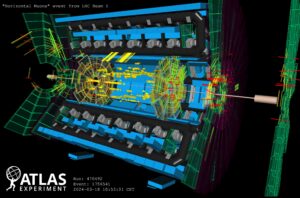Slowly at CERN in Geneva, the Large Hadron Collider particle accelerator is coming out of it regular hibernation again. Progress can be followed live on a CERN web page.
Late last week, for the first time since the annual winter shutdown, a first beam of protons briefly went around the accelerator’s 27-kilometer circle at full 6.8 TeV energy. The first collisions of proton beams are expected on April 8, when all tests and fine-tuning of the machine are over. Then the large CERN experiments involving colliding protons can resume their measurement program.
The LHC will enter its last year in its current version with the April restart. Preparations for this have been going on step by step and test by test since this spring and are even ahead of schedule, the head of CERN’s accelerator section, Dutchman Rende Steerenberg, reported in an interim report on the CERN website.
At the end of this measurement season, scheduled for November or December, the next so-called long shutdown, the third long shutdown, will begin. This LS3 will last several years, and will be used to build the next version of the accelerator, the High Luminosity LHC that will deliver ten times more intense proton beams. A number of new facilities for the HL-LHC have already been built at CERN in recent years.
The three major experiments ATLAS, ALICE and LHCb at CERN in which Nikhef is involved, report dar they are now also seeing the beams passing through their detectors.
Especially at the LHCb experiment, it was a race against time to be ready in time for the returning beam. Last month, a new version of the central VELO detector was installed, by a team from Nikhef and others. The old VELO, located near the beam, previously malfunctioned due to an unforeseen pressure incident.

After this measurement season, the detectors of the experiments will also be further prepared for the ten times more intense collisions at the HL-LHC. Among other things, ATLAS will get a new inner detector, the ITK, for which Nikhef is building the two end pieces.
The higher intensity also means that the LHC experiments will collect and distribute a lot of measurement data to participating countries. Among other things, this also requires much faster data connections. Nikhef is working on tests of 800 Gbit fiber-optic connections, twice as fast as current lines.